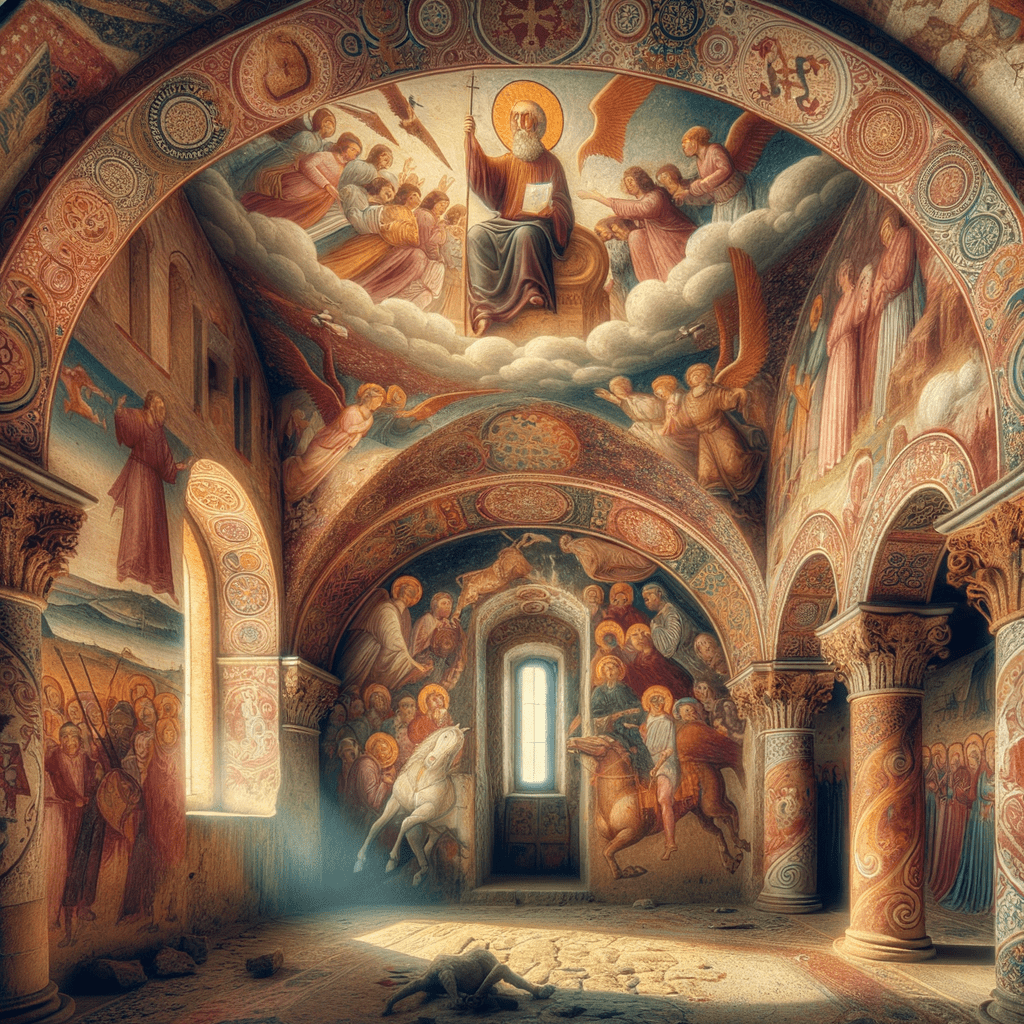Travel through Europe to discover lesser-known medieval frescoes that tell fascinating stories of bygone eras
When thinking about medieval frescoes, often the most famous works come to mind, such as those by Giotto in the Scrovegni Chapel or the masterpieces of Cimabue. However, Europe is dotted with lesser-known frescoes that tell equally fascinating stories and deserve to be rediscovered. In this article, we will explore some of these hidden treasures, traveling through various European countries to uncover the artistic marvels that the Middle Ages have bequeathed to us.
Italy: The Frescoes of San Pietro al Monte
Located in Civate, Lombardy, the Abbey of San Pietro al Monte is a hidden gem that houses frescoes of extraordinary beauty. These frescoes, dating back to the 11th century, depict biblical scenes and figures of saints with surprising vividness and detail.
- The Creation of Adam: A fresco depicting God creating Adam, showcasing the use of color and perspective that anticipates Renaissance techniques.
- The Last Judgment: A depiction of the Final Judgment that covers the entire apse wall, featuring figures of angels, demons, and souls awaiting their fate.
These frescoes are not only examples of artistic mastery, but they also provide a glimpse into the spirituality and beliefs of the Middle Ages.
France: The Chapel of Saint-Martin-de-Fenouillet
In the heart of the Occitania region, the chapel of Saint-Martin-de-Fenouillet houses frescoes dating back to the 12th century. These murals are particularly notable for their vivid colors and the depiction of scenes from the life of Christ and local saints.
- The Nativity: A fresco depicting the birth of Jesus with a delicacy and attention to detail that makes the scene almost come to life.
- Saint Martin and the Poor Man: A depiction of the famous episode where Saint Martin divides his cloak with a poor man, symbolizing charity and compassion.
These frescoes are a perfect example of how medieval art could be used to educate and inspire the local community.
Spain: The Frescoes of San Baudelio de Berlanga
In Castile and León, the small church of San Baudelio de Berlanga is famous for its unique frescoes that combine Christian and Islamic elements. These paintings, dating back to the 11th century, are a rare example of cultural and religious syncretism.
- The Deer Hunt: A fresco depicting a hunting scene with a precision and realism that is surprising for its time.
- The Christ Pantocrator: A representation of Christ as the ruler of the universe, surrounded by symbols of the four evangelists.
These frescoes offer a unique window into the coexistence and interaction between different cultures in medieval Spain.
Germany: The Frescoes of Sankt Georg in Oberzell
On the island of Reichenau in Lake Constance, there is the church of Sankt Georg, famous for its Carolingian frescoes. These paintings, dating back to the 9th century, are among the oldest examples of Christian art in Europe.
- The Healing of the Paralytic: A fresco depicting Jesus healing a paralytic, rendered with striking simplicity and expressive power.
- The Multiplication of Loaves and Fishes: A depiction of the miracle of multiplication, with a composition that guides the viewer’s eye through the scene.
These frescoes are an extraordinary example of the medieval art’s ability to communicate stories and religious teachings in a visually powerful way.
Conclusion
The lesser-known medieval frescoes of Europe are hidden treasures that deserve to be rediscovered and appreciated. These mural paintings are not only works of extraordinary beauty but also offer a glimpse into the beliefs, stories, and cultures of the Middle Ages. Traveling to discover these frescoes is a way to connect with the past and to appreciate the richness and diversity of Europe’s artistic heritage.
For more information on medieval frescoes and how to visit them, it is recommended to consult the website of the ICOMOS, the International Council on Monuments and Sites.
In summary, the forgotten frescoes of medieval Europe are an invaluable heritage that offers us a unique window into the past. Exploring these hidden treasures is a fascinating journey that enriches our understanding of medieval history and art.




